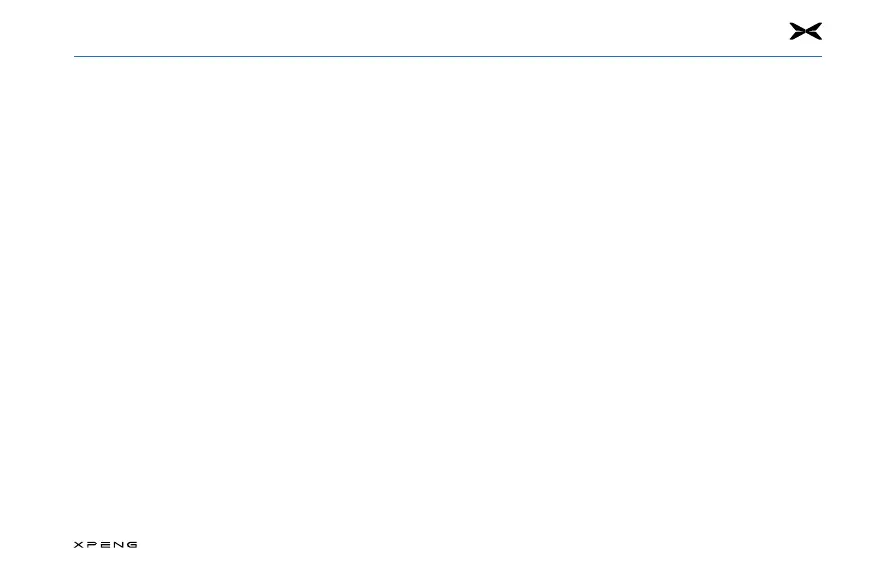6. XPILOT Driving
144
5. Lane conditions are not met.
6. The vehicle is shifted into another gear.
7. The driver's seat belt is unbuckled.
8. Warning lights are turned on.
9. Any door is opened.
10. The radar is obscured. Radar may be obscured by mud,
ice, snow, etc.
11. Tire pressure detection system alarms.
12. Wipers are in LO or HI.
13. The system is malfunctioning or in need of repair.
14. Road conditions are not met.
LCC should not be used in the following cases:
●
Roads with sharp turns, or poor road conditions such as
bumpy, slippery, or icy roads.
●
Sloping roads, or uphill or downhill sections.
●
Roads where pedestrians or cyclists may pass through.
●
Dark (poor lighting conditions) or poor visibility (due to
heavy rain, snow, dense fog, etc.).
●
Strong light (such as oncoming headlight or direct
sunlight) obstructs the camera's view.
●
The preceding vehicle blocks the view of the camera.
●
Windshield blocks the view of the camera (water spray,
dust or sticker blocking, etc.).
●
Excessive wear, coverage, and disappearance of lane
lines, overlapping of old and new lane lines, temporary
adjustments, or rapid changes due to road construction
(e.g., lane bifurcating, crossing, or merging).
●
Objects or landscape features project on lanes, forming
large shadows.
●
Road surfaces with text or trac signs.
●
Radars are restricted. (For radar restrictions,
Refer to Page 109.)
●
Cameras are restricted. (For camera restrictions, Refer to
Page 111.)
●
Radars or cameras are obscured (by dust, cover, etc.), or
the weather conditions are poor (e.g. heavy rain, snow,
dense fog).
●
LCC is not suitable for some weather conditions when
there is significant lateral airflow or strong winds on one
side of the vehicle, which can aect the performance of
LCC.
The above examples, warnings, and constraints do not
exhaust all the conditions that aect the proper operation of
the LCC.

